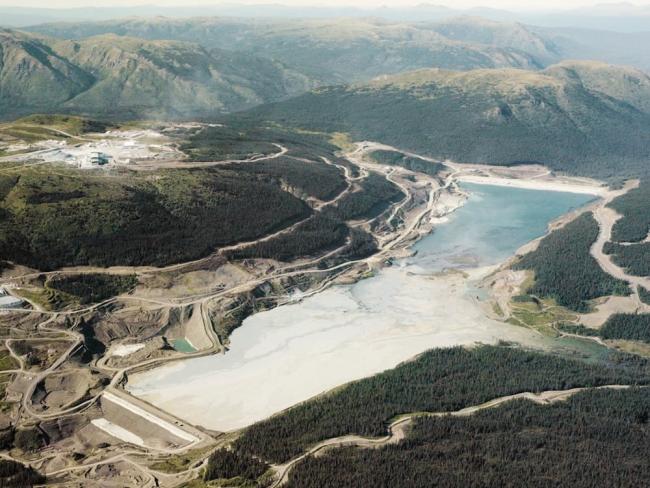Articles Menu

Nov. 25, 2025
en years ago, members of the Tahltan nation in northern British Columbia were blockading roads to prevent the opening of the Red Chris copper mine, concerned about its potential environmental impacts. Today, hundreds of Tahltan work at the mine, their communities reap millions of dollars in grants and royalties from it, their corporate arm does big business with it, and their government has a powerful voice in its future.
For the Tahltan, it seems like a success story, a case study in asserting Indigenous rights and winning concrete benefits from extractive industries operating on their traditional lands. But as the rush for critical metals turbocharges demand for copper, that same mine, and several others proposed for Tahltan territory, might pose serious risks for other Indigenous groups across the border in Alaska.
It’s an example of how, even in places where Indigenous peoples have won a degree of power, the costs and the rewards of the critical metals rush still aren’t being spread around equally. Red Chris is one of at least eight proposed or operating mines in B.C. that sit near major rivers that flow across the border into southeast Alaska. The Tahltan have negotiated decision-making agreements for some of those mines, in addition to Red Chris.
Indigenous Alaskans, on the other hand, don’t reap any economic benefits from the mines that might outweigh environmental concerns, nor do they have any say in how they are operated. All they get is the risk that pollutants from the mines will harm their communities.
“We’re very concerned,” says Guy Archibald, executive director of the Southeast Alaska Indigenous Transboundary Commission, a consortium of 14 tribal nations downstream from the mines. “Those rivers are the source of our salmon, of our oolichan, our moose and all our cultural opportunities as well. You can’t protect a watershed if you’re only considering the top half of it.”
The Alaskans are waging an increasingly assertive campaign to change that. The SEITC has petitioned the Inter-American Commission on Human Rights to investigate the impacts of the border-crossing mines. Earlier this month, the group sent several ministers in B.C.’s government a petition, signed by 30,000 people, calling for mine permits to be paused until the Alaskan nations are consulted.
Last week, SEITC filed a case in B.C.’s Supreme Court aimed at forcing the province to include the Alaskan groups in consultations about the mines.
Pressure to fast-track mine expansion
The issue is heating up because mining is expanding rapidly in northwestern B.C. The area is jam-packed with copper, as well as gold, silver and other metals, and between soaring demand from electric vehicle and renewable energy producers, and the push to build up domestic industries in the face of U.S. President Donald Trump’s tariffs, Canada wants to see more of them dug up.
Newmont Corporation, which owns the Red Chris mine, is currently seeking permission to expand operations there. Both the federal and provincial governments have earmarked it as a project to be fast-tracked for approval.
Last spring, however, the nonprofit group Skeena Wild Conservation Trust released a report that raised fresh concerns about Red Chris. Among other things, the researchers found that selenium and other contaminants were leaching out of the mine’s tailings pond and waste rock into nearby creeks and lakes. Selenium levels in the flesh of rainbow trout in some of those lakes had doubled, reaching a level considered unsafe for humans to eat.
The Tahltan Central Government issued a formal response, saying it was “actively working on several initiatives to address critical issues” around the tailings and waste rock. Attempts to seek comment from the Tahltan and Newmont for received no responses.
“These are large projects, and each one has the potential for significant impact,” says Adrienne Berchtold, the primary author of the Skeena Wild report. “When you put a bunch of them together, that’s a lot of cumulative pressure on a region that is already undergoing some pretty rapid transformations under climate change.”
‘Their decision to make’
The SEITC hasn’t heard anything back from the B.C. government, says Archibald, nor from the Tahltan. They’re not looking to second-guess the Tahltan’s decisions on Red Chris and other mines.
“If the Tahltan central government is benefiting from and maybe even promoting mining, you know, that’s their decision to make. We’re not looking to impinge on what the Tahltan central government is doing,” Archibald says.
“We only ask that we have the opportunity to maybe make the same decisions,” he adds. “If it slows things down, if they have to protect the lower portions of these rivers adequately and spend maybe a little bit more money on monitoring and mitigation, well, so be it. Everybody should benefit.”
An earlier version of this article was published on Vince Beiser’s Power Metal Substack.
[Top photo: Red Chris is one of at least eight mines in BC near major rivers that flow into Alaska. Photo via SEITC.org.]